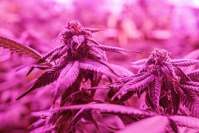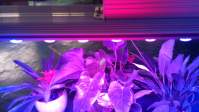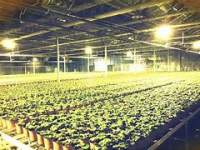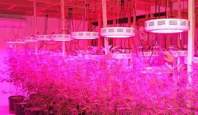The benefits of led plant lights for cowpea cultivation
The tender stems of cowpea are delicate in texture, soft and delicious in fiber, and have a unique aromatic flavor. It is a high-end nutritious and health-care vegetable and is very popular among consumers. Because of this, the market for cowpeas is in short supply. Yaorong Technology led plant lights to conduct research on cowpea cultivation, and strive to improve the yield and quality of cowpea.
Cowpea likes warmth, is very resistant to heat, and is not resistant to low temperatures. The lowest temperature for seed germination is 8-12°C, and the optimum temperature is 25-30°C. The optimum temperature for plant growth and development is 20-30℃; the optimum temperature for flowering and podging is 25-28℃. The maximum temperature that plants can adapt to is 30-40°C, and 35°C is also capable of normal pod formation. Cowpea is very sensitive to low temperature, growth is inhibited below 10℃, plants below 5℃ are injured, and die at 0℃. Cowpea is suitable for cultivation in summer. However, with the delay of the sowing period, when the temperature in the pod setting period is too high, the number of pods per plant and the number of seeds per pod will decrease, which will reduce the yield, and the phenomenon of "hanging" will appear. Cowpea is light-loving, but also has a certain degree of shade tolerance, and the leaves have strong photosynthetic ability. The flowering and pod stage requires good light, so it is beneficial to increase the yield of cowpea with dwarf vegetables. Cowpea is a short-day plant, but most varieties are not sensitive to long-day response; shortening the sunshine can lead to early flowering and pod setting, and reduce the tendency of flowering nodes.
Visible light blue-violet light and cyan light have a great effect on plant growth and the formation of young buds. This kind of light energy has always been the elongation of plants to form a short and thick form; at the same time, blue-violet light also dominates cell differentiation especially The most important light; blue-violet light can also affect the phototropism of plants. Ultraviolet rays inhibit the formation of certain growth hormones in plants, thereby inhibiting the elongation of stems; ultraviolet rays can also cause phototropic sensitivity, and can promote flowers like blue, purple and cyan light in visible light. The formation of penicillin. Both the red light in visible light and the infrared light in invisible light can promote the germination of seeds or spores and the elongation of stems. The red light in the led plant light can also promote the decomposition of carbon dioxide and the formation of chlorophyll.
The effect of the spectrum of led plant growth lights on the photosynthesis of plants The light that has a greater impact on plants is mainly divided into three categories. Ultraviolet rays and visible light and infrared rays. Let's analyze these three types of light in detail below.
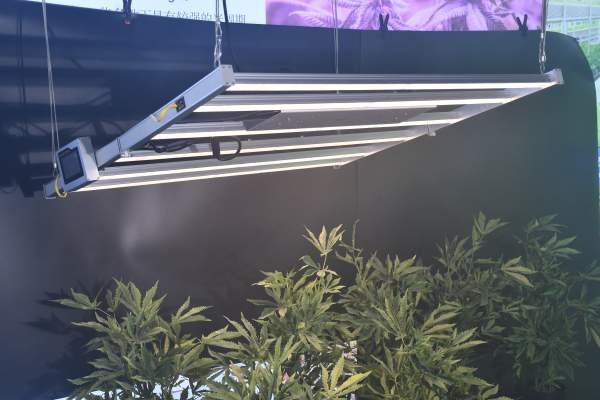
The first band of radiant light: it is ultraviolet light that contains a lot of energy, but part of the ultraviolet light is absorbed by the ozone layer. Therefore, we are more concerned about the parts closely related to agricultural film: ultraviolet-b (wavelength is between 280-320nm) and ultraviolet-a (wavelength is between 320-380nm), these two wavelengths of ultraviolet rays are different. The role is such as: coloring the flowers of plants.
The second band of radiant light: it is visible light (wavelength is 400-700nm), which is equivalent to blue light, green light, yellow light and red light, also known as PAR, which is the active area of photosynthesis. It is the most important part of visible light used by plants for photosynthesis. Blue light and red light are the most important parts in the PAR band, because riboflavin in plants can effectively absorb this part of light, while green light is not easily absorbed.
The third wave of radiation is infrared, which can be divided into near-infrared and far-infrared. Near-infrared light (wavelength 780-3,000nm) is basically useless to plants, it only generates heat. The far infrared has a wavelength of 3000-50,000nm, and this part of the radiation does not come directly from sunlight. It is a kind of radiation produced by molecules with thermal energy, which is easily lost at night.
Plants are most sensitive to red light spectrum, not very sensitive to green light, and the most sensitive area of the spectrum is 400~700nm. This section of the spectrum is usually called the effective energy region of photosynthesis. Approximately 45% of the energy of sunlight is located in this section of the spectrum. Therefore, if artificial light sources are used to supplement the amount of light, the spectral distribution of the light sources should also be close to this range. When we know the distribution of the effect of spectral wavelength on photosynthesis, we can get an accurate indicator of photosynthetically effective radiation (PAR) through a spectral radiometer. The led plant growth light source can already be configured into a highly efficient plant light source according to the effective spectrum of photosynthesis. The led plant growth light must require sunlight in accordance with the law of plant growth, and the led plant growth light uses the principle of sunlight, led plants The light of the growth lamp replaces the sunlight to provide a better growth environment for plants.
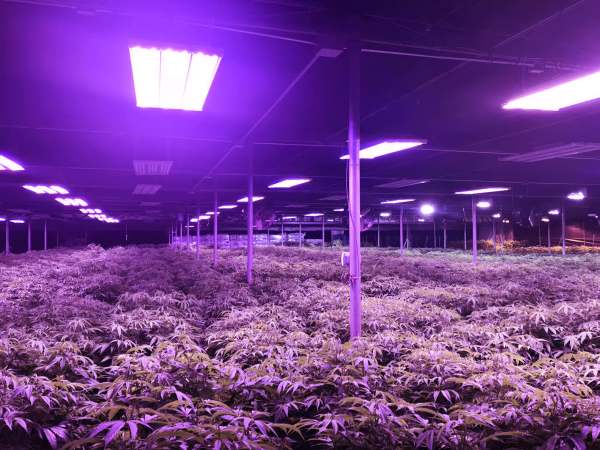
According to the growth habit of cowpea, Yaorong technology led plant lights provide the best growth environment for cowpea, which can be adjusted in different growth stages. Control the temperature during the seed germination period and control the temperature during the growth period to regulate the light. The proportion of blue light increases to promote the growth of the stems and leaves of the plant. The temperature is controlled and the light is adjusted during the flowering and pod setting. The increase in the proportion of red light promotes The flowering and fruiting of plants, while controlling the light time.
Through continuous experiments by Yaorong Technology, it has been shown that under the careful care of Yaorong Technology LED plant lights, the yield and quality of cowpea have been significantly improved, and they are grown in greenhouses, and LED plant lights are used to supplement the light. In winter, it is possible to grow cowpea that is delicious and nutritious.


